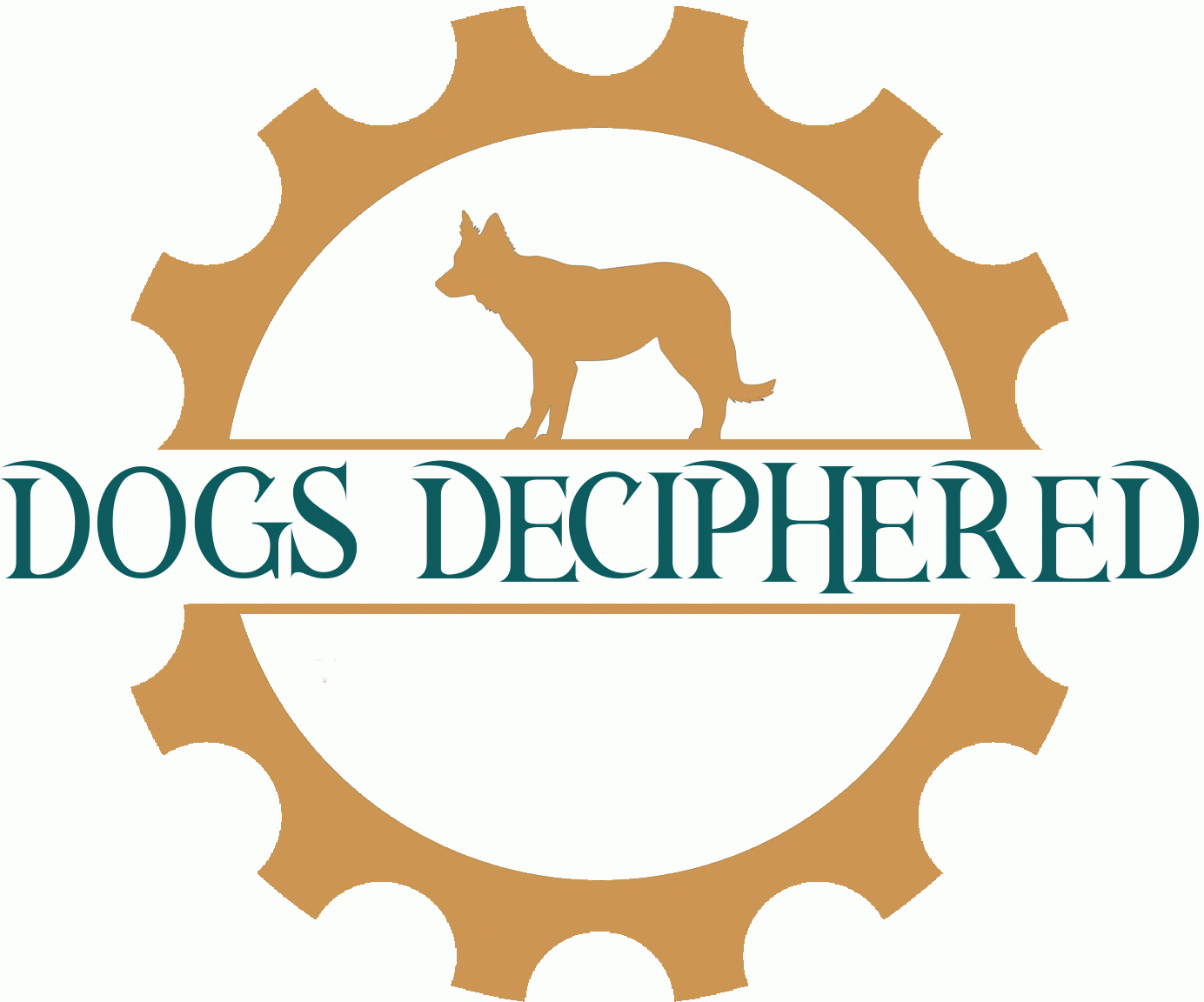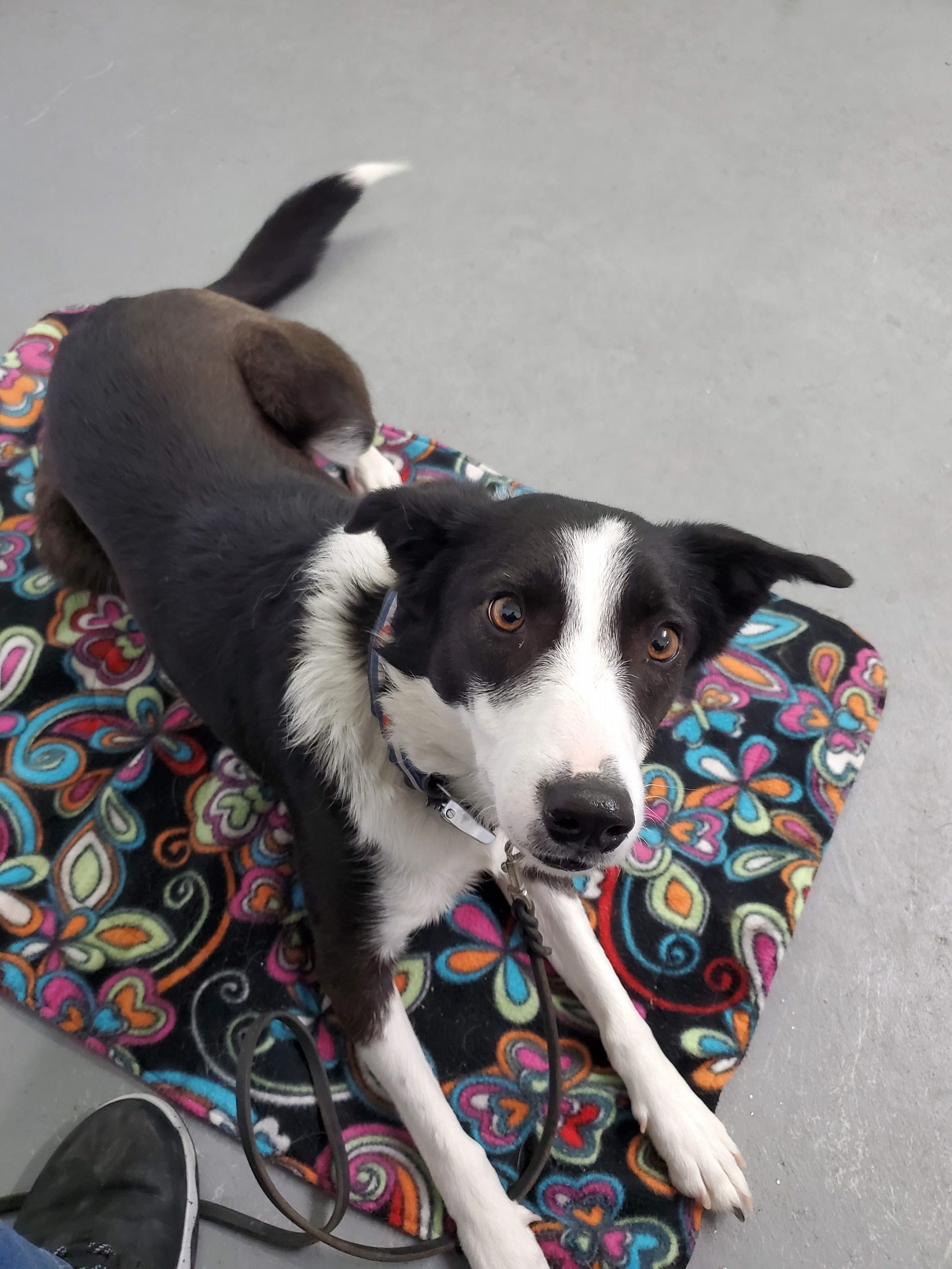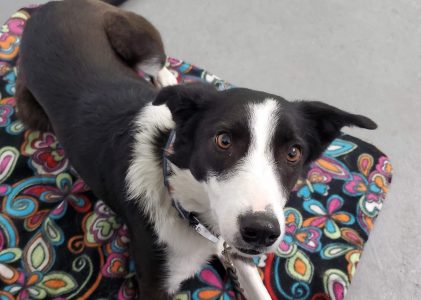For years, training dogs has focused on training specific behaviors, put on verbal or hand cues, so that the human could instruct the dog to perform that behavior. How these behaviors are taught and maintained has evolved over the years, and many trainers focus their training on teaching discrete behaviors in this fashion. Good trainers ask the question, “What do you want the dog to do?” instead of focusing on suppression of unwanted behavior. Most trainer discussion revolves around what behaviors need to be taught, and the best way to teach those behaviors. It’s fun to teach a dog a new behavior – to see them begin to understand, become eager to perform the behavior, and to one day show mastery over the skill. I think it’s a good thing, and important, to teach dogs to sit, lie down, stay, come when called, all the “basics”. I also think we need to rethink how and when we ask for those behaviors in the larger context of our dogs’ lives. More importantly, I think dogs need to be taught some general concepts that lay a foundation for anything you could want to do with your dog. These foundational skills are the first thing I teach a dog, and the first thing I fall back on when my dog is struggling. I can sum up these foundational skills into three basic categories: 1)The dog can always check in with the human to get feedback about the environment, 2) The human is a more reliable access point for reinforcement than “self-serve” reinforcement from the environment, and 3) It feels better to be relaxed than worked up. I’ll talk about how I teach each of these concepts below. The major take-away is that you should always focus on skills that you and your dog can be successful with – don’t keep asking for behavior your dog can’t do.
The first concept I want all dogs to learn is that they can always check in with their human to get feedback about the environment they are currently in. Dogs have all sorts of strategies to deal with new information, and many of them are undesirable to us. Some dogs stress down and refuse to go anywhere, others stress up and are barking, lunging messes, while others can’t contain their excitement. All of these dogs need a system to gather the information they need in an appropriate manner, and the human is their check-in station. We want our dogs to look to us when they are uncertain, stressed, or over-the-top excited, so that we can give them feedback on how to proceed. I call this “reorienting”, and it involves the dog not only physically, but mentally disengaging with whatever is holding their interest. While there are specific behaviors we can teach our dogs to do in these circumstances, they should all center around the first concept – check-in with your human. I start with Pattern Games from Leslie McDevitt, which allow the dog to fall into a familiar framework that they have practiced and recognize. I am fluid in using all the Pattern Games I have taught a dog to have a conversation about the environment. It’s never about a specific behavior the dog is doing, it’s about teaching the dog that I am reliable in helping them get the information they need from the environment. Once they have gathered information, and feel comfortable in the environment, I can start thinking about what specific behaviors I want the dog to do there.
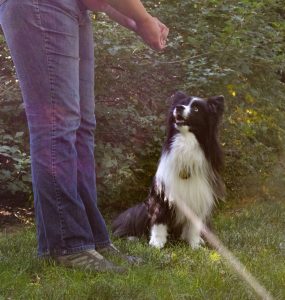
with you for information about the environment.
The second concept is something that has evolved in my own training over time. I used to think of it as “self-control”, and I still think there’s a strong component of the dog learning to control an impulse. Really broken down, the concept is this – the human will provide a consistent access point to reinforcement, and reduce the opportunities for “self-serve” reinforcement that involves no human input. I start off by teaching the dog that they can get paid if they “look but don’t touch” a desired reinforcer such as a tasty morsel of food. This eventually becomes a system where the dog can point out interesting things in the environment, and I will pay accordingly. An important point to remember is that we don’t choose what is reinforcing to our dogs, and our end of the bargain is that we will provide access to the things that our dogs love the most. I focus on teaching the dog that something interesting to them is an environmental cue to check-in with me, and using the Premack Principle to allow them access to appropriate reinforcers. As soon as dogs learn that we aren’t asking them to come away from the fun forever, or for free (in the case of “fun” that you don’t want to give your dog access to), they become much more comfortable with leaving a valued reinforcer to check-in with you. The more you can use the activities they were actively engaging in as a reinforcer (sniffing, playing with another dog, chasing a squirrel), the more valuable you become, because you are the access point to those activities!
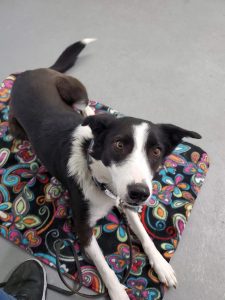
which I can then move to new locations.
The third concept is that it feels better to be relaxed than worked up – and it’s true for all of us. The problem is that stress gave animals an evolutionary advantage to survival, so there is some hard-wiring that those of us in relatively safe environments have to work against. It seems, in the absence of input about direct threats to our safety, such as starvation, or imminent attack, brains find other threats to perceive in the same way. Dogs can become worked up about any number of things, from being left alone to not having access to greet another dog. The concept is about teaching the dog to truly feel relaxed, as opposed to just maintaining a specific behavior such as a down stay. Relaxation can be either passive or active. I teach passive relaxation by teaching the dog that maintaining a relaxed position (generally a down, but again, the specific behavior is not important!) is highly reinforcing. I focus on creating an expectation that there are more treats to come if the dog remains relaxed, starting with tiny slivers of the behavior I eventually want to see. Active relaxation can be either taught or organic, but either way it involves the dog moving around rather than maintaining a position. Pattern Games become a relaxing activity because the dog knows what to expect, and it creates normalcy in varied environments. Organic relaxation for dogs comes from sniffing. Give your dog opportunities to investigate their environment in a location where getting worked up is unlikely.
These concepts are the first thing I focus on when training any dog, and they are the first thing I check in on if I’m struggling with my dog. If a behavior problem is persisting, it is likely the dog’s foundations are lacking in one or more of these three concepts. I find a lot of comfort and clarity in the fact that I can always go back to these concepts to determine my training plan. One of the worst feelings in the world is not knowing what to do – and it’s a common feeling for dog owners experiencing behavior problems. The reason I teach foundational training is because it allows you to know what to do next. It’s more important for us to remember what to do in a stressful situation than it is to train the dog to do any specific behavior in response to that situation. When things aren’t going to plan, you can quickly assess – Does the dog need information? Do they want something I’d prefer they not have access to? Or, do they need to learn to be more relaxed in this environment? In the case of all three, your first step is to create enough distance from the situation so that your dog can access the skills you’ve worked on. If you remember to focus on these foundational skills, you and your dog will be able to work through any difficult situation. Once we get through the tough stuff, your whole world is opened up to possibilities of what you and your dog can do together!
It should be noted that most dog sports have their own “foundations”, and for me, the concept of foundational training was developed from my K9 Nose Work training, where foundational training is everything. I believe that all dogs should start off with the foundational concepts outlined above, regardless of what sport or activity they may go on to do. I also believe that focusing on the foundations of a sport is vital to you and your dog’s understanding and enjoyment of that sport. Again, if you ever feel frustrated by your progress or abilities within a sport or activity, revisit your foundations!
